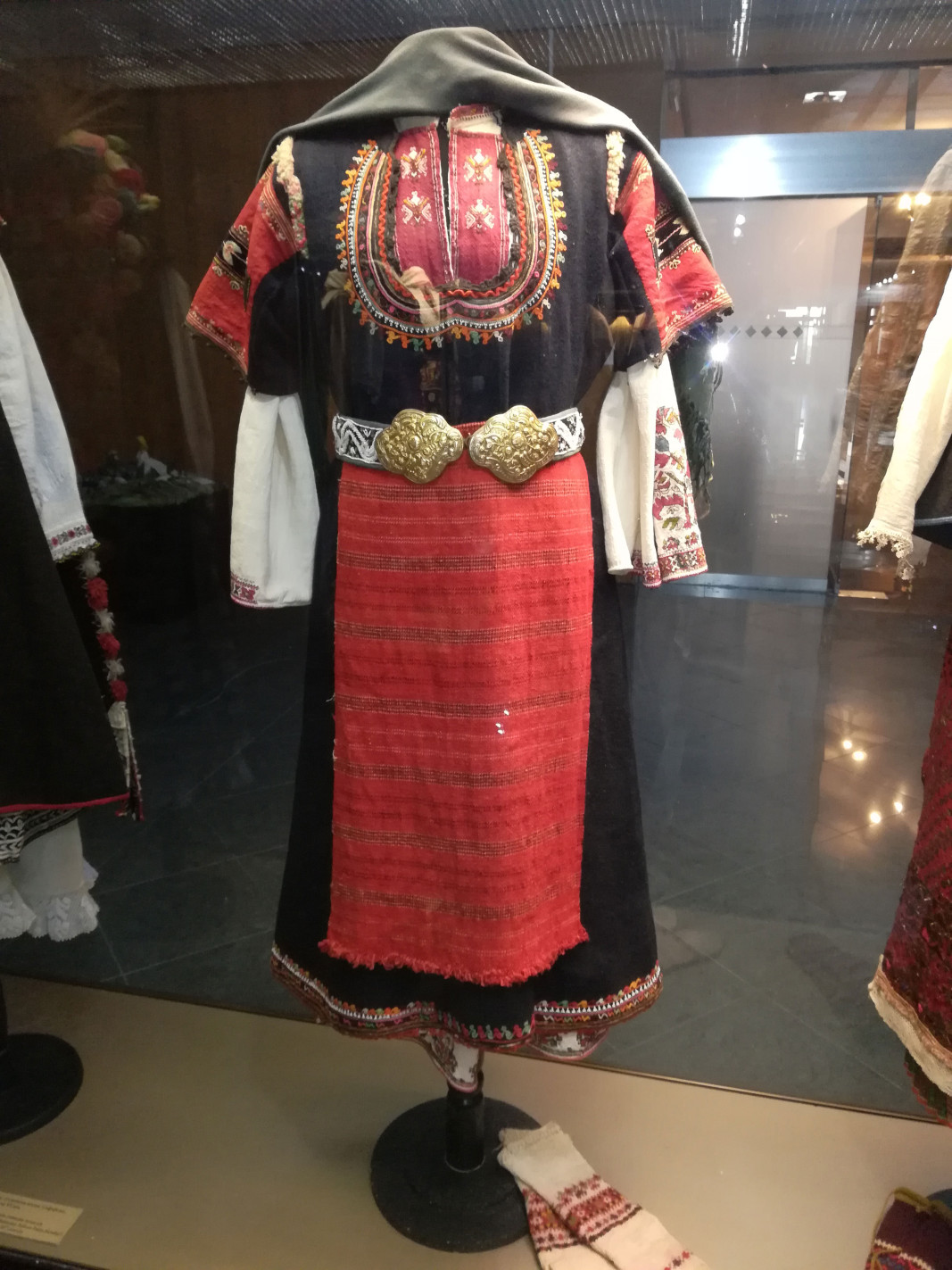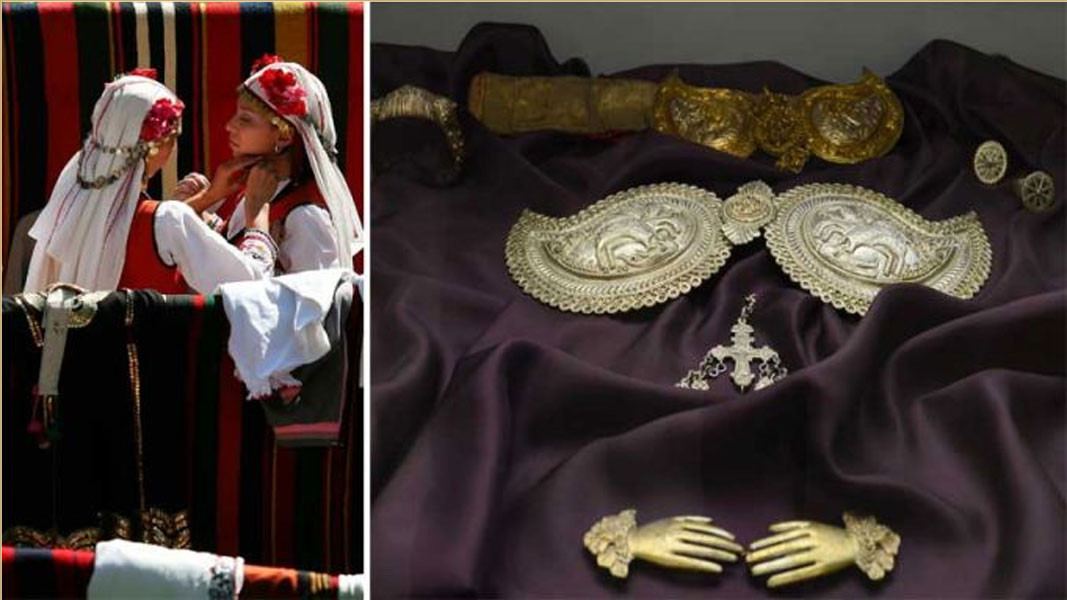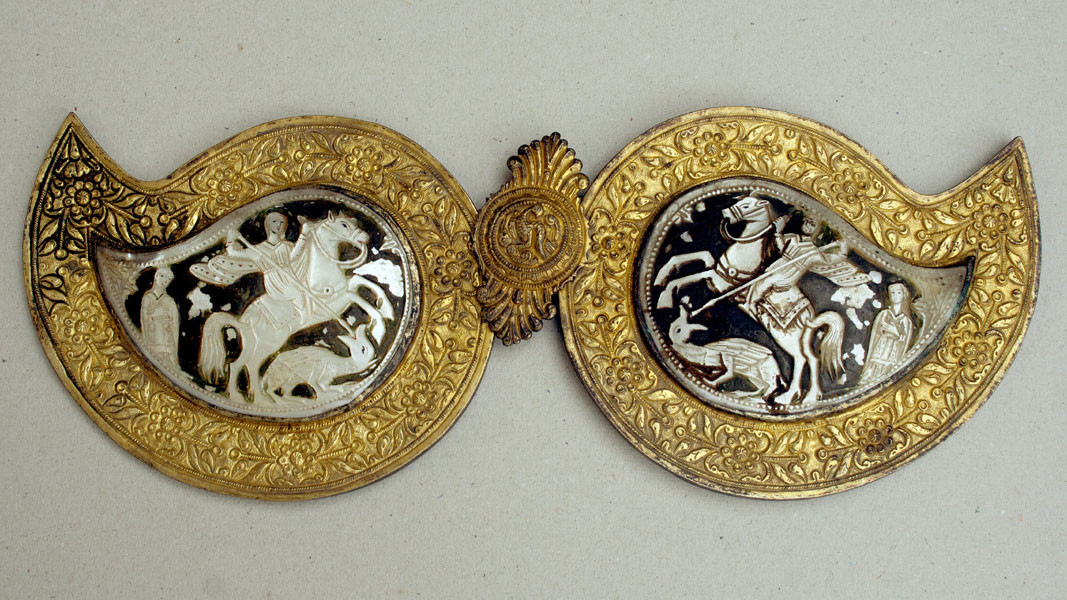One of the most striking elements of the female national costume in Bulgaria are, without doubt, the belt buckles (pafti). Made out of different metals they are ornate, elaborate, decorated with quaint figures and patterns, and are regarded as a symbol of femininity. Yet to begin with, they were an attribute of the clothes worn by men.

“During the Middle Ages in Bulgaria, belt buckles were a mark of a man’s social standing. They were worn by military commanders, and the decorations on the buckles denoted the man’s military rank,” says Grozdelina Georgieva from the Regional Ethnographic Museum in Plovdiv. “When Bulgaria was conquered by the Ottoman Empire in the 14th century, Bulgarians lost their state and their army. For this reason during the National Revival belt buckles gradually made the transition to the female costume, to become “guardians” of the most important part of the body – the childbearing organs. The social role of men as protectors was lost, and it was up to women, who carried on the bloodline, to keep state and people alive.”
 Belt buckles were a sign of social standing, defining the passage of the girl into a different social group – that of married women. She received it as a betrothal gift from the boy’s family but unlike the head or chest pieces, the rings and the bracelets, which were also part of the betrothal gifts, belt buckles were a mandatory attribute, to be worn as a sign that she is already married. That was why unmarried girls were not allowed to wear buckles.
Belt buckles were a sign of social standing, defining the passage of the girl into a different social group – that of married women. She received it as a betrothal gift from the boy’s family but unlike the head or chest pieces, the rings and the bracelets, which were also part of the betrothal gifts, belt buckles were a mandatory attribute, to be worn as a sign that she is already married. That was why unmarried girls were not allowed to wear buckles.
As all other pieces of jewellery, buckles were attributed magical properties. There was a reason why they were made out of metal and why craftsmen preferred to use silver – because silver is white and capable of reflecting the “evil eye” like a mirror and turning it back on itself. Unlike national costumes, belt buckles are not strictly regional.
“Besides the purely protective function, buckles were also decorative because women treasure any grain of beauty, they want it to be seen, and to demonstrate their own beauty,” Grozdelina Georgieva says.
The diversity of patterns and subjects depicted on belt buckles is striking.
 “Living in the Ottoman Empire, Bulgarians adopted some of the elements of their costumes and the accessories,” Grozdelina Georgieva explains. “That is why pafti decoration included the ornamentation permitted in Ottoman iconography like flowers, leaves, grapes, fruit, patterns, geometrical elements. Baroque-style elements even appeared in the late 18th century, infiltrating from the eastern markets.”
“Living in the Ottoman Empire, Bulgarians adopted some of the elements of their costumes and the accessories,” Grozdelina Georgieva explains. “That is why pafti decoration included the ornamentation permitted in Ottoman iconography like flowers, leaves, grapes, fruit, patterns, geometrical elements. Baroque-style elements even appeared in the late 18th century, infiltrating from the eastern markets.”

The mother-of-pearl inlays on buckles, depicting saints or Christian feasts are simply fascinating. They were brought by pilgrims from the Holy Land and were often gifted to priests who wore pafti under their cassocks.
“That is why some big Bulgarian monasteries, like Rila and Bachkovo monastery, have such incredible collections of buckles.”

 As city fashion made its way, before the country’s liberation (1878), into big cities where various cultures mingled, belt buckles receded because city dresses required a different kind of accessories. Belts were now very delicate, made of silver or gold, and the buckle was shaped like a ribbon or a spiral. There were still places where the old-style buckles were worn, but they too were beginning to change, growing smaller, changing shape with added mother-of-pearl and inlays. What other secrets do the old-time belt buckles hold?
As city fashion made its way, before the country’s liberation (1878), into big cities where various cultures mingled, belt buckles receded because city dresses required a different kind of accessories. Belts were now very delicate, made of silver or gold, and the buckle was shaped like a ribbon or a spiral. There were still places where the old-style buckles were worn, but they too were beginning to change, growing smaller, changing shape with added mother-of-pearl and inlays. What other secrets do the old-time belt buckles hold?
“Perhaps the biggest secret is the belief that they will protect you. It was believed that the human body was divided into an upper and a lower part, and that the midriff – where the waist-band or belt goes – is the most vulnerable. A woman was supposed to safeguard her pafti because if they fell into evil hands they could be used to cast the evilest of spells.”

Photos: private library,
Regional Ethnographic Museum Plovdiv
and Ani Petrova /BNR
On this day 35 years ago, the authoritarian regime of communist dictator Todor Zhivkov collapsed. To mark the anniversary, the BGNES news agency carried out a survey of monuments to totalitarianism. The agency checked whether the monuments of the..
Residents and guests of the village of Kolena, Stara Zagora Municipality, gather for the Young Wine Festival. The event was celebrated for the first time in 2017, and a few years later the local teacher and winemaker Martin Slavov gave the..
The tallest Ferris wheel in Bulgaria will rise above Pleven , announced regional governor Nikolay Abrashev. It will be built in a multifunctional complex near the Kaylaka Park. "The project envisages the construction of a Ferris wheel with a..
Who said Bulgarians were grumpy pessimists? Take a stroll through Sofia's Christmas bazaars and meet the cheerful crowd. The festive decorations, music,..

+359 2 9336 661
